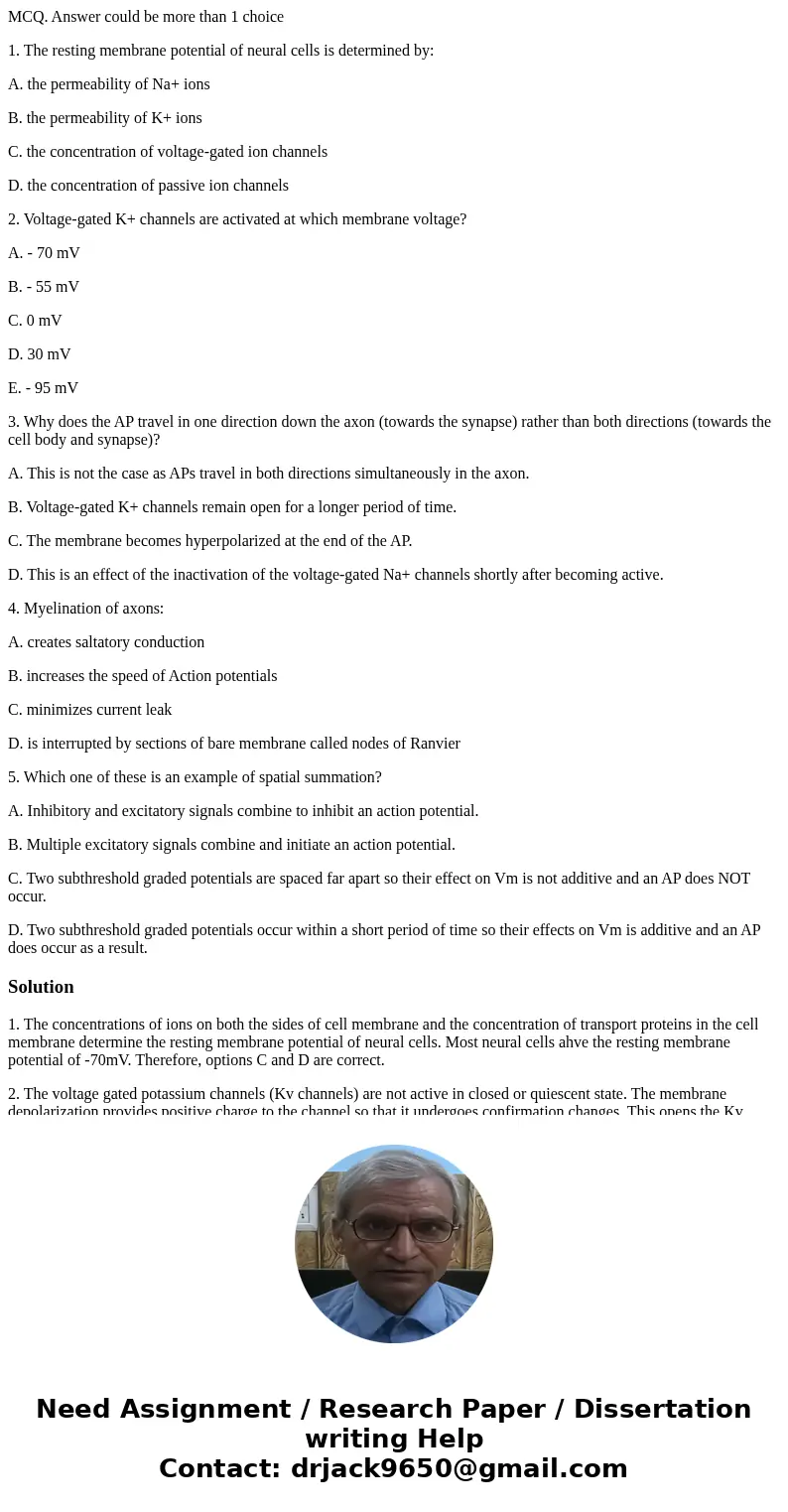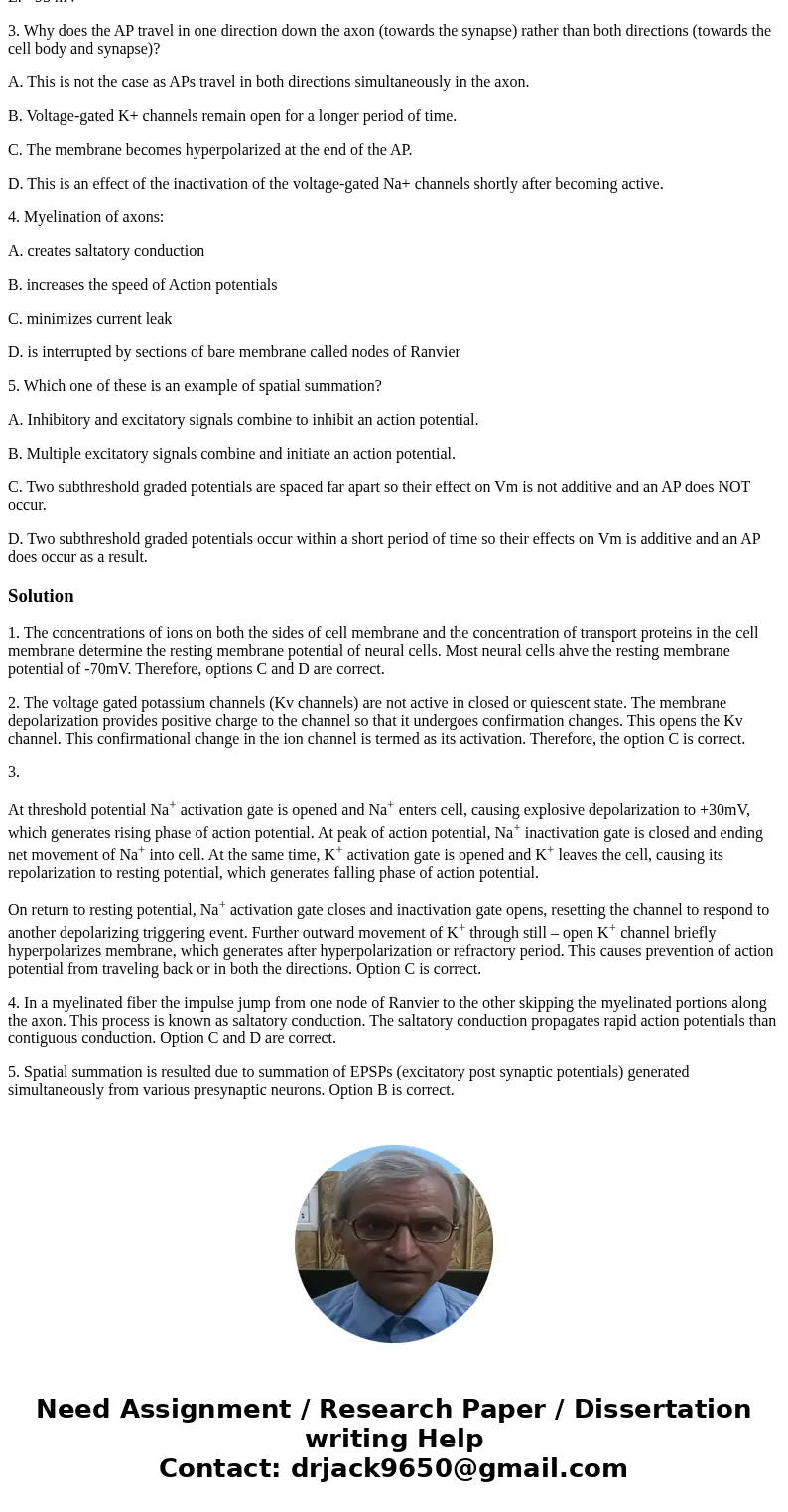MCQ Answer could be more than 1 choice 1 The resting membran
MCQ. Answer could be more than 1 choice
1. The resting membrane potential of neural cells is determined by:
A. the permeability of Na+ ions
B. the permeability of K+ ions
C. the concentration of voltage-gated ion channels
D. the concentration of passive ion channels
2. Voltage-gated K+ channels are activated at which membrane voltage?
A. - 70 mV
B. - 55 mV
C. 0 mV
D. 30 mV
E. - 95 mV
3. Why does the AP travel in one direction down the axon (towards the synapse) rather than both directions (towards the cell body and synapse)?
A. This is not the case as APs travel in both directions simultaneously in the axon.
B. Voltage-gated K+ channels remain open for a longer period of time.
C. The membrane becomes hyperpolarized at the end of the AP.
D. This is an effect of the inactivation of the voltage-gated Na+ channels shortly after becoming active.
4. Myelination of axons:
A. creates saltatory conduction
B. increases the speed of Action potentials
C. minimizes current leak
D. is interrupted by sections of bare membrane called nodes of Ranvier
5. Which one of these is an example of spatial summation?
A. Inhibitory and excitatory signals combine to inhibit an action potential.
B. Multiple excitatory signals combine and initiate an action potential.
C. Two subthreshold graded potentials are spaced far apart so their effect on Vm is not additive and an AP does NOT occur.
D. Two subthreshold graded potentials occur within a short period of time so their effects on Vm is additive and an AP does occur as a result.
Solution
1. The concentrations of ions on both the sides of cell membrane and the concentration of transport proteins in the cell membrane determine the resting membrane potential of neural cells. Most neural cells ahve the resting membrane potential of -70mV. Therefore, options C and D are correct.
2. The voltage gated potassium channels (Kv channels) are not active in closed or quiescent state. The membrane depolarization provides positive charge to the channel so that it undergoes confirmation changes. This opens the Kv channel. This confirmational change in the ion channel is termed as its activation. Therefore, the option C is correct.
3.
At threshold potential Na+ activation gate is opened and Na+ enters cell, causing explosive depolarization to +30mV, which generates rising phase of action potential. At peak of action potential, Na+ inactivation gate is closed and ending net movement of Na+ into cell. At the same time, K+ activation gate is opened and K+ leaves the cell, causing its repolarization to resting potential, which generates falling phase of action potential.
On return to resting potential, Na+ activation gate closes and inactivation gate opens, resetting the channel to respond to another depolarizing triggering event. Further outward movement of K+ through still – open K+ channel briefly hyperpolarizes membrane, which generates after hyperpolarization or refractory period. This causes prevention of action potential from traveling back or in both the directions. Option C is correct.
4. In a myelinated fiber the impulse jump from one node of Ranvier to the other skipping the myelinated portions along the axon. This process is known as saltatory conduction. The saltatory conduction propagates rapid action potentials than contiguous conduction. Option C and D are correct.
5. Spatial summation is resulted due to summation of EPSPs (excitatory post synaptic potentials) generated simultaneously from various presynaptic neurons. Option B is correct.


 Homework Sourse
Homework Sourse